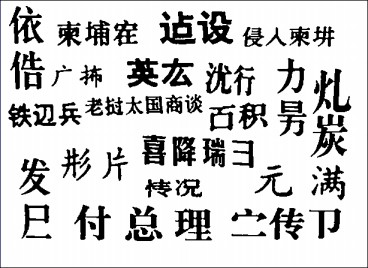BabelStone Blog
Saturday, 10 October 2009
A Modest Proposal to Encode Ultra-Simplified Chinese Characters
A lot of people hate simplified Chinese characters, but I personally think they are great, and that the only things better than simplified Chinese characters are simplified simplified Chinese characters. But for some reason most of the second stage simplified characters introduced in 1977 (and abandonned less than a year later) remain unencoded in Unicode, so it is difficult for ultra-simplificationists like myself to communicate electronically in our preferred form of writing. As it does not look as if China is in any hurry to propose them for encoding, I have put together a modest proposal to encode the 257 outstanding second stage simplifications from 1977, as well as 23 unencoded Singapore simplifications from 1969, and 55 unencoded "first batch" simplifications from 1935.
This 112 page document, entitled "Proposal to Encode Obsolete Simplified Chinese Characters", is available as document N3695 in the WG2 document register or as document L2/09-260 in the Unicode document register.
Unfortunately, WG2 delegates CJK encoding matters to its Ideographic Rapporteur Group (IRG) which I understand does not accept submissions from individuals, so unless China or Unicode adopts my proposal it is not likely to get anywhere very fast.
Update [2016-01-01]
Just over six years after my submission of the original proposal (N3695), 102 "Table 1" second stage simplified characters were included in the Unicode Consortium's submission for IRG Working Set 2015 (IRGN2091). The complete set of documents are available on the IRG website under "IRGN2091". IRG Working Set 2015 should eventually become CJK Unified Ideographs Extension G (in several years time, probably in time for inclusion in Unicode 12.0 in 2019).
Index of BabelStone Blog Posts
